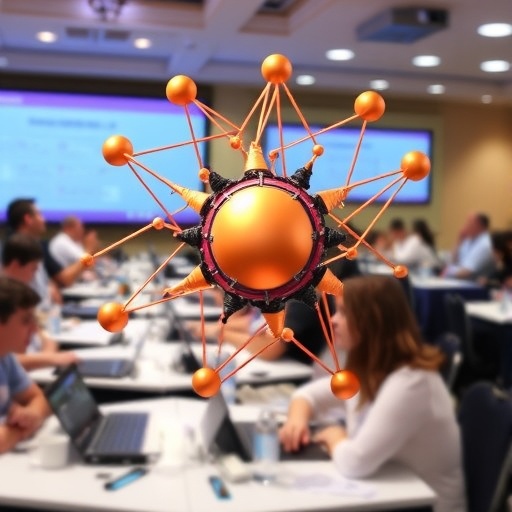The 5th Biomedical Engineering Educational Summit emerges as a pivotal event aimed at transforming the landscape of biomedical engineering education. This initiative is especially significant as advancements in technology and healthcare necessitate a new wave of education that meets the demands of the evolving biomedical industry. The summit serves as a platform for educators, industry professionals, and policy makers to converge and share innovative teaching methodologies and insights aimed at enhancing the educational experience in biomedical engineering. As the medical field embraces revolutionary technologies, the integration of these changes into educational frameworks becomes critically important.
At the heart of the summit lies the collaborative effort to define what biomedical engineering education should encompass in the future. This includes addressing the need for interdisciplinary knowledge that combines principles of engineering, physical sciences, and biological sciences. The forthcoming discussions at the summit promise to unravel teaching techniques that not only empower students with technical prowess but also equip them with critical thinking and problem-solving skills vital to this multifaceted discipline. As the complexities of healthcare challenges grow, so does the imperative for education that fosters adaptive learning environments.
One of the key objectives of this summit is to facilitate the creation and exchange of best practices among participants. By sharing successes and challenges from diverse educational settings, attendees can develop a richer understanding of effective pedagogical strategies. This collegial atmosphere is ripe for cultivating innovative ideas and proposals that could underpin future educational reforms. The richness of dialogue and collaboration at the summit emphasizes how critical peer interaction is in the field of education, especially in disciplines as dynamic as biomedical engineering.
The planning committee, comprised of leading educators and industry experts, strives to ensure that the sessions adequately reflect the diverse needs of the biomedical engineering community. These sessions are designed to cover a broad spectrum of topics, from project-based learning and collaborative research initiatives to the integration of cutting-edge technologies into the curriculum. Highlighting the importance of practical application in educational endeavors, the summit will address how students can engage in real-world problem-solving through enhanced curricular programs.
Moreover, the summit is positioned as a vital conduit for knowledge dissemination, reinforcing a culture where learning is ongoing, and shared resources are the cornerstone of advancement. Critical to this mission is the dissemination of outcomes that arise from the summit discussions, enabling an expansive reach beyond the immediate participants. The outcomes will likely be compiled into comprehensive reports outlining actionable strategies that educators can implement in their institutions to elevate the caliber of biomedical engineering education.
In the spirit of fostering inclusivity, the summit actively encourages participation from various educational institutions, from community colleges to research universities. This equal-opportunity approach not only harmonizes the dialogue across different educational landscapes but can catalyze innovative educational partnerships. The robust exchange of ideas amongst institutions fosters an environment where unique educational approaches can be tested and refined, which ultimately contributes to the overall enhancement of the geological knowledge base in biomedical engineering.
A defining feature of this summit is the emphasis on aligning biomedical engineering education with industry needs. By engaging with industry representatives, educators can better tailor their curricula to ensure that graduates possess the skills and competencies that employers seek. This alignment is essential to bridging the gap between education and employment, thereby ensuring that new graduates are not only knowledgeable but also job-ready. As industries evolve, the demand for professionals who can seamlessly integrate into the workforce grows increasingly relevant.
With a clear focus on educational outcomes, the summit is expected to generate actionable insights and recommendations that can be swiftly integrated into existing curricula. These outcomes will not simply be theoretical; rather, they will reflect real-world applications and initiatives that demonstrate success. This pragmatic approach leads to a learning environment where students are encouraged to innovate, critically assess, and adapt their knowledge to various health challenges they may encounter.
Furthermore, as part of the summation, discussions on the ethical considerations in biomedical engineering education will play a crucial role. As future engineers will hold responsibilities that directly impact patient care, understanding ethical implications becomes indispensable. Integrating ethics into the curriculum nurtures a generation of engineers who are not only technically sound but also morally grounded and engaged in socially responsible practices.
As the summit continues to foster collaboration throughout the biomedical engineering community, it encapsulates the ethos of collective progress. Participants will emerge with renewed motivation and a shared commitment to elevating educational standards. The synergy generated during the sessions is expected to last long after the summit concludes, leading to sustained dialogue and collaboration among attendees.
The outcomes of the summit may yield significant publications, contributing to the canon of biomedical educational literature. These publications would provide evidence-based recommendations, theoretical frameworks, and case studies that can serve as robust resources for educators globally. This burgeoning body of work could inspire further research and innovation in biomedical engineering pedagogies, ultimately reinforcing the importance of education in shaping the future of healthcare technology.
By bridging knowledge gaps and fostering collaboration, the 5th Biomedical Engineering Educational Summit stands as a beacon of hope and progress in education. Stakeholders in biomedical education are encouraged to leverage the insights and relationships fostered during this event to stimulate ongoing improvements in their practices. Ultimately, the summit aims not merely to inform but to ignite a profound transformation in the way biomedical engineering is taught and perceived.
With all these compelling discussions and initiatives at the summit, the future of biomedical engineering education looks bright. The journey toward enhancing educational standards is a continuous one, and this summit signifies an important step forward. As the biomedical engineering landscape evolves, the outcomes from this summit will be instrumental in shaping a workforce that is ready for the challenges and opportunities that lie ahead.
Subject of Research: Biomedical engineering education and its advancement through collaborative efforts at the summit.
Article Title: Facilitating the Development of Sessions and Dissemination of Outcomes from the 5th Biomedical Engineering Educational Summit.
Article References: Rooney, S.I., Amos, J.R. Facilitating the Development of Sessions and Dissemination of Outcomes from the 5th Biomedical Engineering Educational Summit.
Biomed Eng Education (2025). https://doi.org/10.1007/s43683-025-00193-7
Image Credits: AI Generated
DOI:
Keywords: Biomedical engineering education, summit, collaboration, curricular development, industry engagement.
Tags: adaptive learning in biomedical engineeringadvancements in biomedical technologybiomedical engineering education reformcollaboration in engineering educationcritical thinking in engineering educationeducational frameworks in science and technologyfuture of biomedical engineering curriculumhealthcare challenges and educationinnovative teaching methodologies in engineeringinterdisciplinary knowledge in healthcarepolicy making in biomedical engineeringsummit highlights on education





